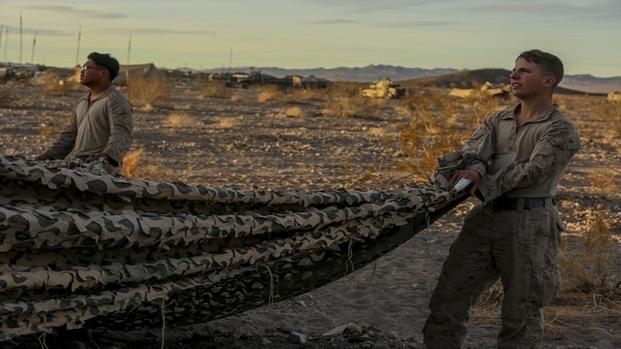Faced with a new battlefield threat from commercially-available drones, Marines this month engaged in realistic battlefield training that included quad-copter target practice.
The training was part of the massive West Coast exercise Steel Knight, which spanned most of a month and included five major events ranging from long-range raids to force-on-force training. During the exercise, Marines from 1st Light Armored Reconnaissance Battalion got their hands on quad-copter unmanned aerial vehicles, the kind available from many major retailers, and simulated a realistic fight.
During the live-fire portion of the exercise, they practiced shooting the drones down with M240 coaxial mounted machine guns, the commander of 1st LAR's D Company, Capt. Adam Unkle, told Military.com in an interview.
"It was like, okay, these commercial drones that any Joe off the street can buy, can we shoot them down, what does that look like," Unkle said. "Can we pick them up through our sights, and everything else like that. And we were able to."
The U.S. Military has purchased a small number of DroneDefenders, sophisticated systems that use frequency interference to take control of drones and bring them to earth unharmed. But training to eliminate the threat with conventional weapons gives the Marines additional options downrange.
Later, in a force-on-force event in which they were pitted against their sister unit, 3rd Light Armored Reconnaissance Battalion, and elements for force reconnaissance, the 1st LAR Marines practiced hiding out from the drones, using old-school concealment techniques to evade their mechanical eyes. Using low-tech tools including camouflage netting, local vegetation, and cheap thermal blankets, the Marines were able to hide from the drones and the troops operating them, Unkle said. In all, he said, the 1st LAR element was able to stay concealed for 36 hours in 12 vehicle and dismounted hide positions.
"So, I know [UAVs] seems like this big monster in the sky, but at the end of the day, whoever’s there on the camera is still looking through a soda straw," he said. "And if he can’t find you, it’s useless."
The idea to use thermal emergency blankets--the kind handed out to runners after long races--came from a corporal in D company, Unkle said.
"We took the cammie net that we put over the top of our positions, tied the thermal blanket on top of it, and eliminated the heat signature," he said. "Innovation-wise, that was something that wasn’t in the publication that we just came up with. A cheap solution."
The concept, he said, is already being included in after-action briefs for the exercise. The use of commercial drones in this year's Steel Knight, a first for the exercise, reflects Marine Corps Commandant Gen. Robert Neller's emphasis on using new technology to dominate the battlefield. At the Modern Day Marine Expo this year, he said he plans to equip all Marine infantry squads with quad-copters for reconnaissance, a cheap tool that he said will give them better awareness while deployed.
But Unkle said the exercise also gave Marines the opportunity to dust off old reconnaissance publications about old-fashioned evasion and concealment techniques that are also increasing in relevance as Marines train to counter a future, technologically sophisticated enemy.
As for the on-the spot idea to use cheap "dollar store" equipment to counter a complex threat, Unkle said that reflects the scrappy way of operating that Marines are known for.
"A corporal comes out of left field, and says, 'hey, I bought this two-dollar thermal blanket, it solves this problem,'" Unkle said. "I wouldn’t say it’s a new way of thinking, it’s just the way Marines work."









